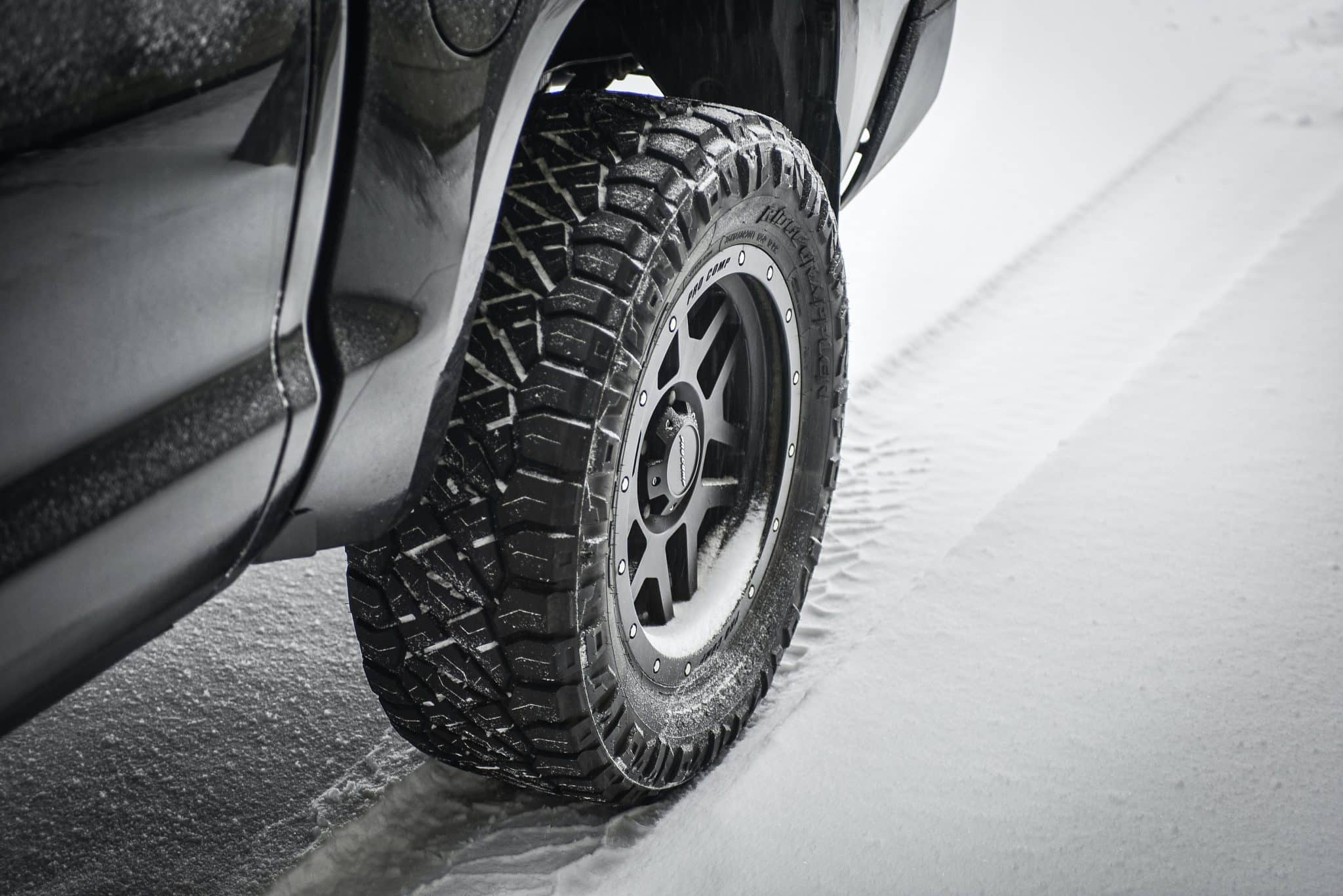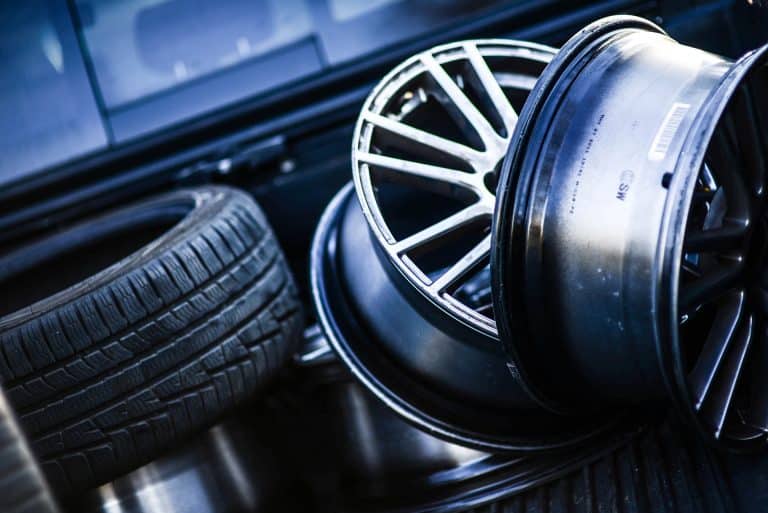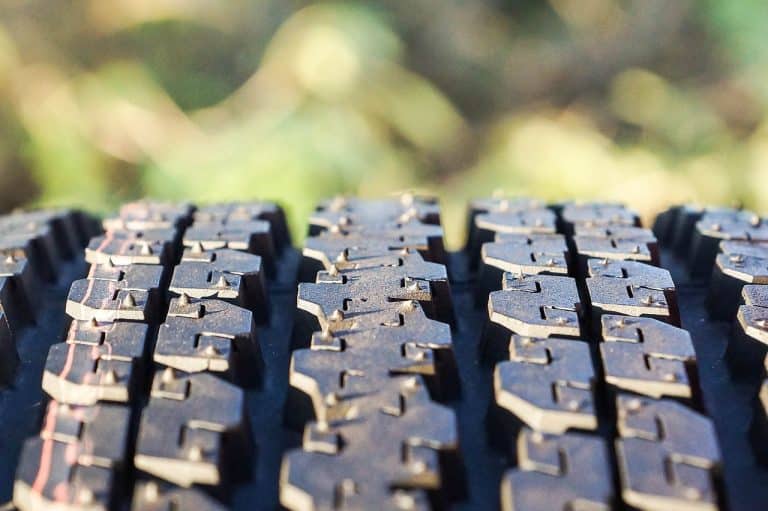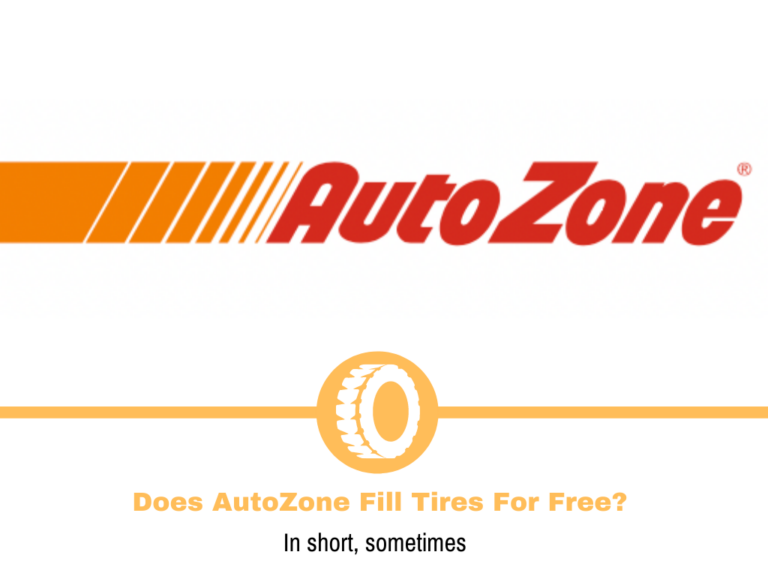Are All-Terrain Tires Also Good in Snow?
Modern technologies have provided us with many benefits over the years. Technological wonders have improved many aspects of the world, including the tire industry.
In the past century, tires have evolved a lot, leading to situations where we have more options. The best part about this is that we have plenty of models for different driving conditions.
Touring, performance, off-road – every condition has a unique model capable of delivering the best performance in those conditions. As a bonus, there are models designed to perform in multiple conditions.
Take all-terrain tires, for example. They are all-season models that can be used throughout the year and deliver performance on paved and non-paved surfaces.
I often say that these kinds of tires won’t excel in a specific situation when compared to their dedicated counterparts. This raises many questions, and for the all-terrain tires, it’s: are they good for snow? Let’s find out.
Are All-Terrain tires good for Snow?
Most people think all-season tires, like all-terrain ones, are good for snow and are half-right. Yes, some performance is on the table, but it’s limited compared to dedicated winter tires. For the most part, you can rely on these tires for lighter conditions, and that’s as much as you should expect.
What are All-Terrain tires?
Before I talk about snow performance, let’s look at what all-terrain tires are. If you want performance on the road and off it, you’ll get these models. They are a blend of highway and mud-terrain tires, combining the best of both worlds. The question about their snow performance comes from the fact they are all-season tires.
Tires sold as “blends” between two types are good for regular use but don’t compare with the dedicated models. The same goes for the all-terrain tires. They are very good on the road, but the highway models are better. It’s the same story in off-road conditions, where a mud-terrain tire will outperform an all-terrain one in most conditions.
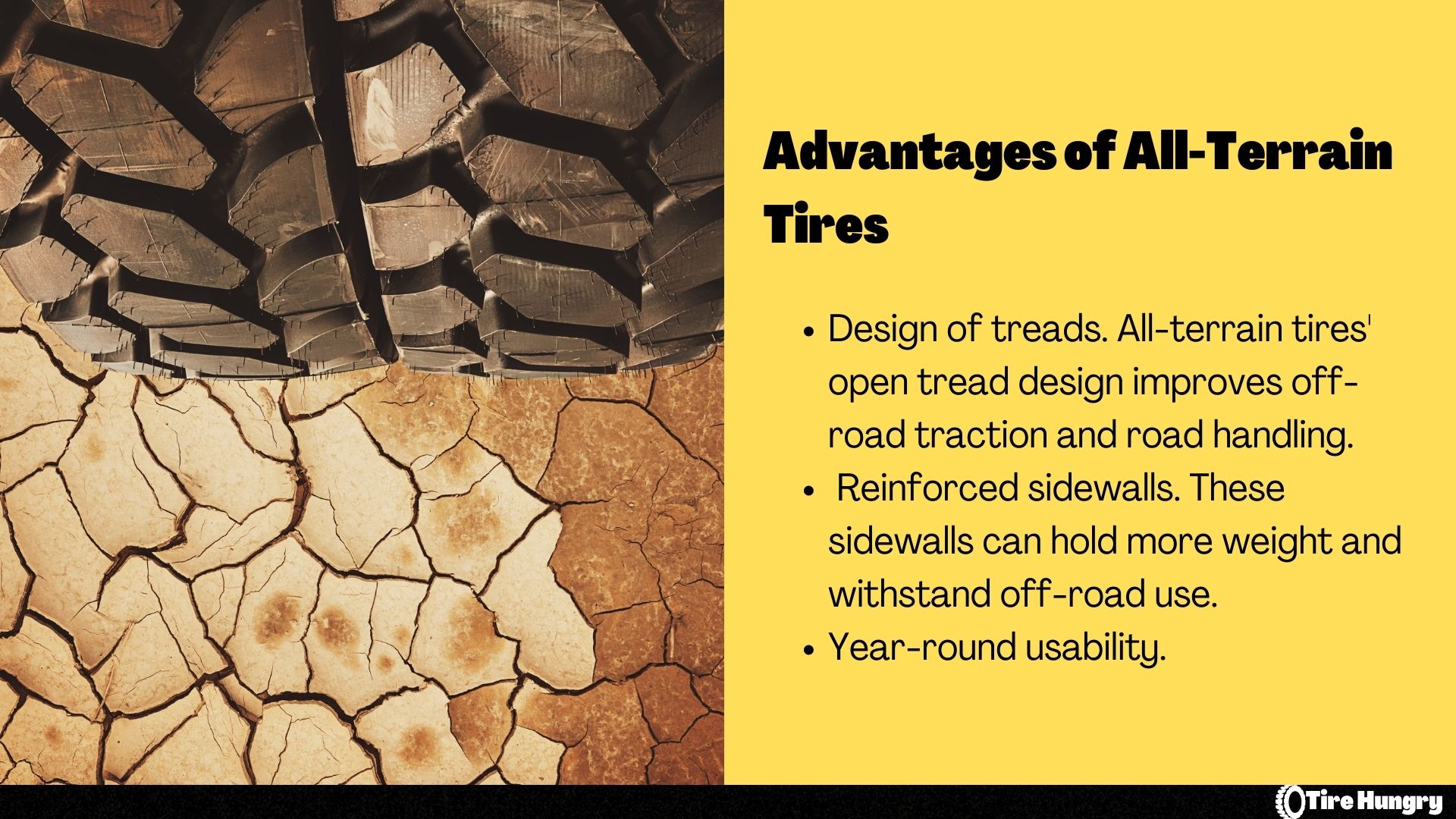
You’re reading this and thinking that all-terrain tires are poor performers. In reality, they’re not, and here’s why. Let’s look at the most aggressive scenario and compare summer and all-season performance tires. On a track, the summer tire will be noticeably better than the all-season one because it works only in those conditions.
On the other hand, the all-season tire will be good in dry but not as good as the summer one. This happens because the rubber compound and tread pattern on a summer tire are designed for those conditions only. With the all-season one, you have a mix, so don’t expect to get the most out of it.
This is a very aggressive example, and most people won’t even think about going on a track, but it should give you an idea of the difference you’ll have. The example and analogy apply to other segment comparisons, like all-terrain tires in snowy conditions.
Can you use All-Terrain tires on Snow?
I may have come harsh about this, but let’s talk about how things really are. All-terrain tires a usable on the snow, and that’s all you’re going to get out of them. Let’s talk about the performance they can and cannot deliver.
All-terrain tires are all-season models and, as such, have the M+S rating. This one stands for mud and snow, which is where all the confusion comes from.
In lighter snow conditions, all-terrain tires will deliver usable and safe performance. This is as long as you’re aware of their limitation. If the snow is shallow and unpacked, the tread pattern will do a decent job of finding traction.
Things don’t improve if the snow is packed. Depending on the tire and the tread pattern, in many situations, an all-terrain tire will perform slightly worse on packed snow when compared with unpacked. There are some models that I’ve tested which do pretty well in these conditions, so it’s not an industry “standard.”
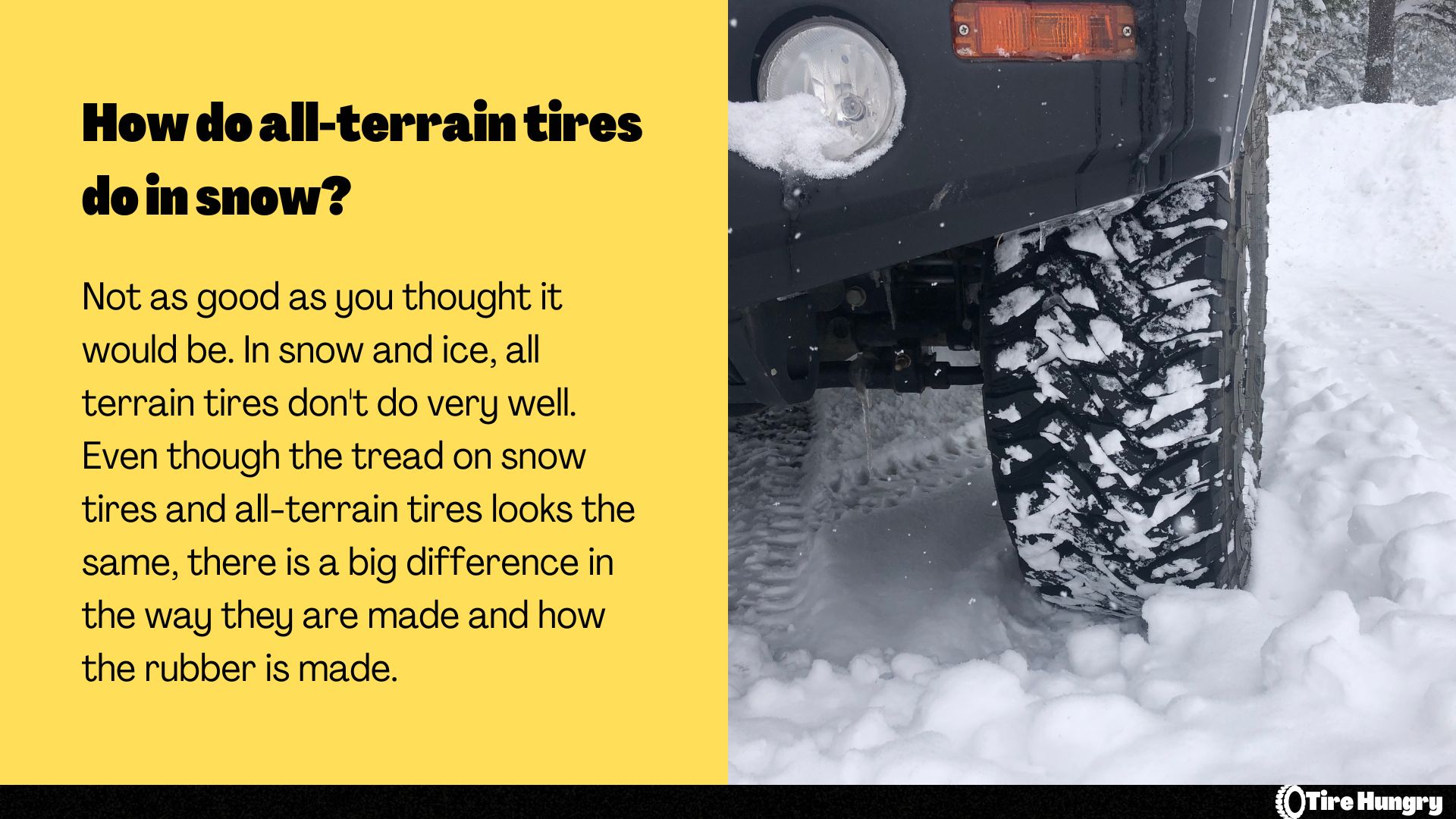
What about ice? Well, all-terrain tires fall apart in these conditions, so don’t expect any performance. The sipes and block edges can offer some traction, but they are useless on ice.
All-terrain tires in snowy conditions are limited by the compound and pattern. In order for the tires to perform as all-season ones, manufacturers must make compromises. They are limited in the most extreme situations, in this case, harsh winters.
Unlike a dedicated winter tire, the rubber compound of an all-terrain tire performs in a wide range of temperatures. In summer, it’s not a massive issue, but in winter, you’ll notice its limitations.
For mildly cold temperatures, all-terrain tires are fine and don’t suffer from “hardened” rubber. Once the temperatures drop well in the freezing numbers, the compound cannot keep up.
The tread pattern is next, and it’s a similar story as with the compound. Being able to deliver performance in multiple conditions means it won’t excel in the harshest conditions. The aggressive pattern that helps all-terrain tires in off-road conditions makes them decent performers on snow but won’t compare with winter tires.
Speaking of the aggressive tread pattern, despite some drawbacks, there is one advantage. All-terrain tires have a more aggressive design when compared with road-going tires for SUVs and light trucks. As a result, the traction on snowy surfaces is slightly better.
Are there any exceptions?
Throughout this article, I mentioned that most all-terrain tires are usable on snow. This implies that there are options that perform better, right? Yes, but there’s a catch.
Depending on the model and manufacturer, some all-terrain tires come with the 3PMSF rating, which is the industry standard for winter performance. Truth be told, these tires fare better than the M+S all-terrain tires.
A while ago, I spoke about the differences between M+S and 3PMSF ratings, so check that guide to get an idea of the difference in detail. In short, 3PMSF-rated tires are better in snow than M+S ones.
M+S-rated all-terrain tires dominate the market, so don’t expect to find plenty of 3PMSF rated ones on the shelves. If you’re after a better winter performance, you’ll need to do some “digging” to find the proper ones.
Another exception is studdable all-terrain tires, which are even rarer than the 3PMSF-rated models. The principle is the same as with the regular winter studdable tires.
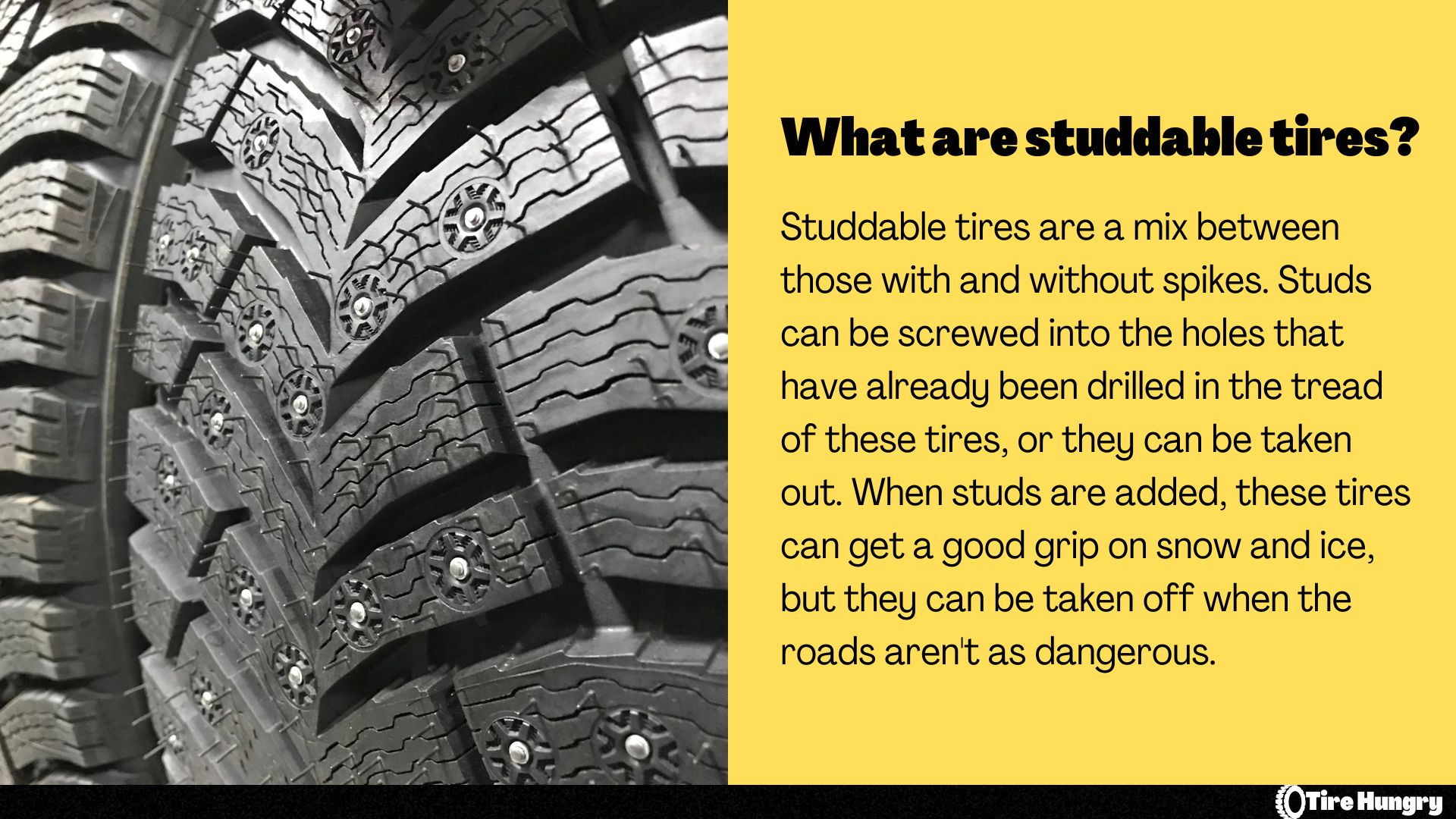
Fitting metal studs in specially designed holes on the tread ensures that all-terrain tires perform better in wintery conditions. There are limitations to the rubber compound, but there are improvements.
For the most part, studdable all-terrain tires offer most of their improvements on icy surfaces. The metal pins improve traction, making them much more usable. You won’t see a massive improvement on unpacked snow. For packed snow, the studs will do a solid job at slightly improving traction.
How to improve snow performance with all-terrain tires?
Considering that all-terrain tires aren’t the champions in snowy conditions, it’s natural to look for ways to improve that. The only thing that can improve is snow chains.
As the name suggests, these are chains you fit to your tires to get a better performance on snow. Chains aren’t designed for all-terrain or all-season tires only. I’ve found myself several times in situations where I fitted chains to winter tires.
The idea is that the chains will dig in and offer better traction. Even though we usually refer to them as snow chains, they can improve performance on ice. You need to be careful in this situation.
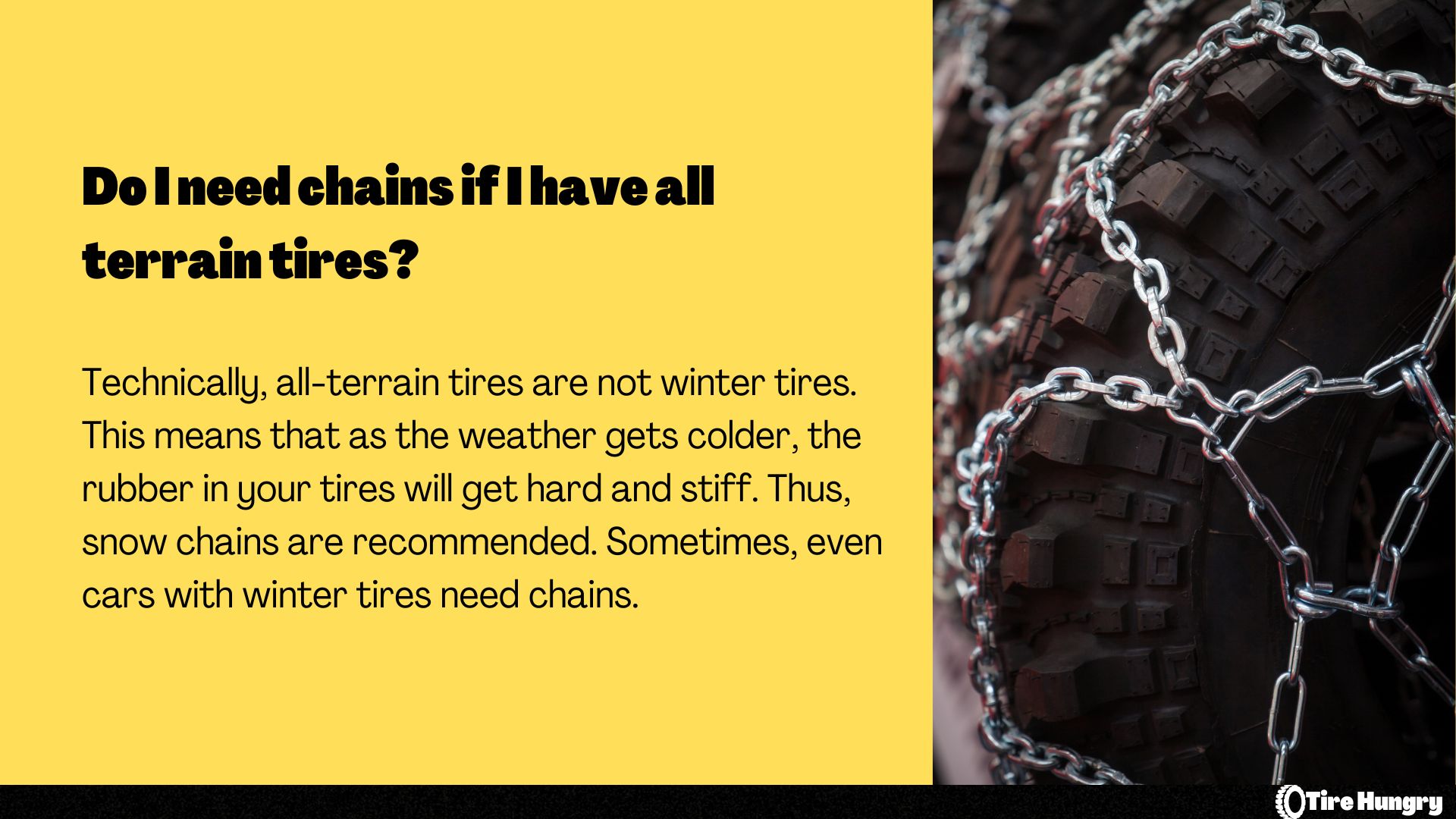
Considering that the chains are metal, they can damage the tire if you’re driving on harder surfaces. Snow isn’t an issue because it’s soft, but ice isn’t. Therefore, you should roll rather than drive, especially on ice, as you decrease the risk of damaging the tires.
You can think of chains like studs you can install easily. It’s not the same level of performance, but the general idea is similar. The most important thing here is to remove the chains once the road is cleared. Driving with the chains on damages the tires and the road.
Conclusion
So what have we learned – that all-terrain tires are poor snow performers? It depends on how you look at things. If we compare them with winter tires, then yes, they aren’t a match. On the other hand, they are much better than summer tires. In essence, they are somewhere in the middle.
The important thing to know is what are a certain tire’s limitations. With all-terrain tires on snow, you should know that you’re limited to the lighter conditions and shouldn’t try driving in the harsher ones. Naturally, not all models perform the same, so there will be some differences.
There are winter situations where an all-terrain tire will not perform as needed. Here, snow chains can be the quickest solution as they help improve performance.
